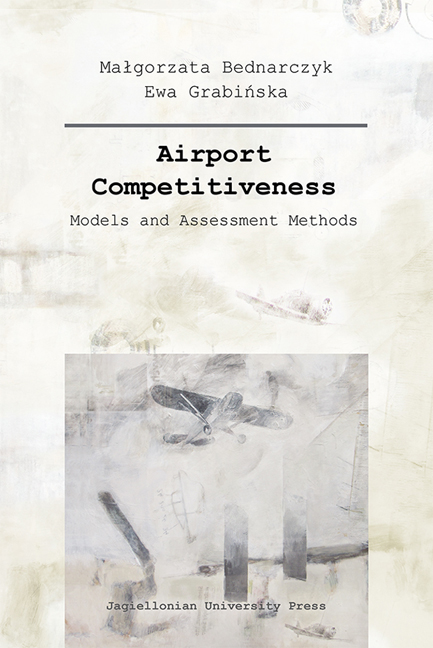Book contents
- Frontmatter
- Contents
- List of Common Abbreviations
- Dedication
- Introduction
- 1 The Essence of Air Transport and its Socio-Economic Role
- 2 Significance of Competitiveness in Air Transportation
- 3 Foundations for Assessing Competitiveness of an Airport
- 4 External and Internal Determinants of Regional Airport Competitiveness
- 5 Competitiveness Model of a Regional Airport
- Conclusions
- List of Tables and Figures, Drawings and Graphs
- Literature
- Appendix
- List of Graphs and Tables in the Appendix
5 - Competitiveness Model of a Regional Airport
Published online by Cambridge University Press: 10 January 2018
- Frontmatter
- Contents
- List of Common Abbreviations
- Dedication
- Introduction
- 1 The Essence of Air Transport and its Socio-Economic Role
- 2 Significance of Competitiveness in Air Transportation
- 3 Foundations for Assessing Competitiveness of an Airport
- 4 External and Internal Determinants of Regional Airport Competitiveness
- 5 Competitiveness Model of a Regional Airport
- Conclusions
- List of Tables and Figures, Drawings and Graphs
- Literature
- Appendix
- List of Graphs and Tables in the Appendix
Summary
In this chapter of the monograph, the authors distinguish the most important factors pertaining to the competitiveness of Polish regional airports (in terms of passenger transport). A devised econometric model is presented, which enables assessment of the significance and the impact of individual features taken from the already established dataset (potential regressors) on shaping the competitive position of individual Polish regional airports.
Based on the availability of feature measurements, the empirical material consisted of data from 11 Polish regional airports in the years 2007–2010 (the present study includes only those airports, which were actually operating in the analysed period). The above-mentioned data is panel-type data, and simultaneously comprises the features applicable to cross-sectional data and time-series data. This is due to the fact that they have been established as a result of observation of identical objects in subsequent time periods. In this particular case, 11 objects referred to 11 airports (n = 11), whose features were subjected to observation in four subsequent years (T = 4). The total count of nT sample was 44 object-periods. The advantage of panel data is that it provides a greater amount of information about these objects. Panel data enables simultaneous consideration of the diversity of studied objects, and observation of their evolution in time.
One of the measures of the share of a given airport in the total share of passenger transport is the percentage of the number of passengers served by the given airport to the total number of passengers served by all airports considered within the analysed group. The random variable, which describes market shares, or fractions (designated respectively on the basis of analysis), assumes values in the range of <0, 1>. We should add that the sum of values assumed by this feature for individual units, observed in the same period, equals 1.
Considering the above, the model applied to the relationship between dependent variable, which describes the summed fractions and the explanatory variables, needs to include the specific character of the former variable. In the case of cross-sectional data, one of the possible applications is the socalled multinomial fractional logit, with parameters estimated as quasi-MLE (quasi-Maximum Likelihood Estimator).
- Type
- Chapter
- Information
- Airport CompetitivnessModels and Assessment Methods, pp. 99 - 126Publisher: Jagiellonian University PressPrint publication year: 2015



